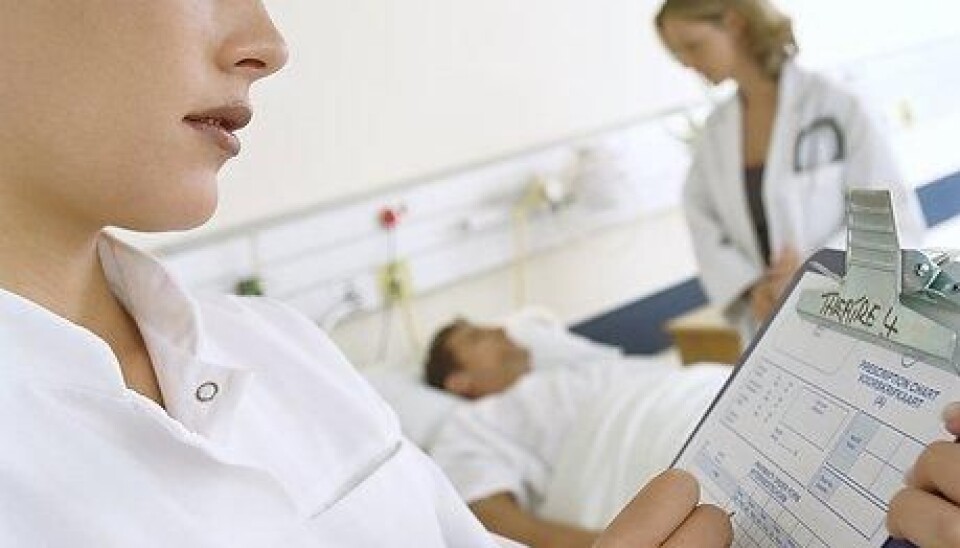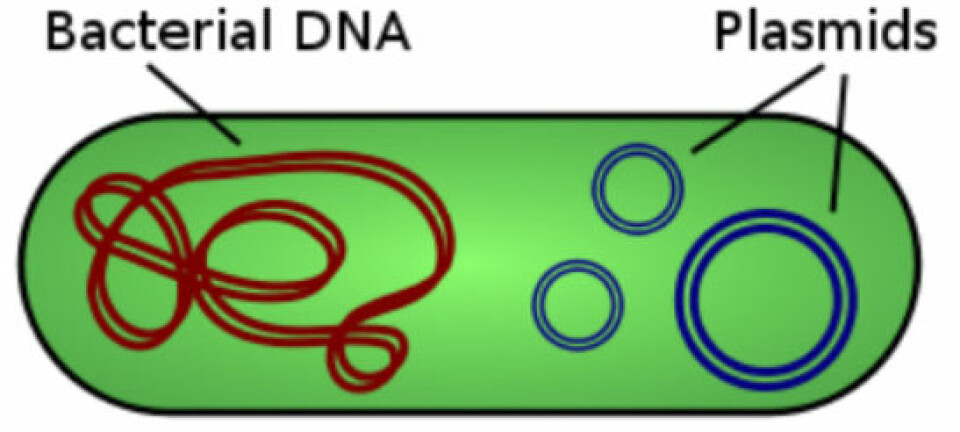
Why we can’t avoid bacteria in hospitals
Bacteria use a hitherto unknown weapon to resist sterilisation of medical equipment. Our attempts to fight these bacteria in hospitals only make them stronger.
Since antibiotics were introduced into clinical use, bacteria have been developing antibiotic resistance mechanisms to defend themselves.
These bacteria cannot be fought off with existing antibiotics, and that presents hospitals with a great challenge as new outbreaks occur on a regular basis.
Now a new study shows that a very common type of these multi-resistant bacteria carries a ‘shield’ which makes them even more difficult to get rid of.
But there’s more: the bacterium can also pass this characteristic on to other types of bacteria.
The bacteria become resistant not only to antibiotics, but also to the thermal stimulus they’re exposed to when for instance heat-sensitive medical equipment is being cleaned.
“The bacteria become resistant not only to antibiotics, but also to the thermal stimulus they’re exposed to when for instance heat-sensitive medical equipment is being cleaned,” says Martin Saxtorph Bojer, a PhD fellow in microbiology at the Danish State Serum Institute and at Roskilde University.
Bojer is the first author of a new study about the concurrent emergence of multidrug resistance and heat resistance.
He says that the more we treat with antibiotics, the keener the bacteria get to copy the double-protective shield from one another.
Gene protects the bacteria
In the study, Bojer and his colleagues isolated a gene from the multi-resistant bacterium Klebsiella pneumoniae.
The gene encodes a protein which can help the bacterium survive in the hospital environment.
It’s a gene that lives on a so-called plasmid, which is an extra set of genes that the bacterium can use as a supplement to its standard set of genes located in its chromosome.
“A plasmid is an additional element, which unlike the chromosome is not crucial for the survival of the bacterium,” says Bojer.
“But the plasmids encode some genes that the bacteria can use. These genes are relevant to the bacteria under special circumstances.”
One such circumstance could be that the bacteria are bombarded with antibiotics or that they are heat-treated.
Fight the bacteria and they will multiply
The paradox is that when hospitals intensify their efforts against these fierce bacteria, it results in even more bacteria starting to use the plasmid as a shield.
“Antibiotics kill all non-resistant bacteria. But all the bacteria that have this plasmid can survive in the hospital environment or inside the patient.”
Shield makes the fight twice as difficult
Here a selection takes place in which the plasmid-bearing bacteria multiply.
This selection does not, however, occur only as a result of the antibiotic treatment.
The sterilisation of medical equipment may also increase the amount of bacteria that are resistant to both antibiotics and mild exposure to heat.
"The selection can occur in two ways. You either select for the multidrug-resistant bacteria by using antibiotics, where the accompanying heat-resistant property is also present in the same plasmid.
“But an indirect selection for multidrug resistance can also take place even without the use of antibiotics, because to a certain extent the bacterium is heat resistant and thus has an increased survival capacity.”
The plasmid shield is a burden
In an ideal world where there was no need to fight the bacteria, the bacteria would rather avoid having to carry this plasmid shield.
“It is ‘economically’ advantageous for the bacteria not to carry too much weight unless they need it,” says the researcher.
Good idea to rethink cleaning procedures
So the battle against multi-resistant bacteria is an issue that bites its own tail – especially when it comes to the Klebsiella pneumonia and its plasmid shield.
A common argument in the public debate on multi-resistant bacteria is that we ought to restrict our use of antibiotics.
But according to Bojer, the discovery of the plasmid with the double resistance means that hospitals may need to start rethinking their sterilisation procedures with regards to heat-sensitive medical equipment.
The authors of the study are currently investigating whether the plasmid contributes with other resistance mechanisms in the bacteria.
--------------------------------------
Read the Danish version of this article at videnskab.dk
Translated by: Dann Vinther









